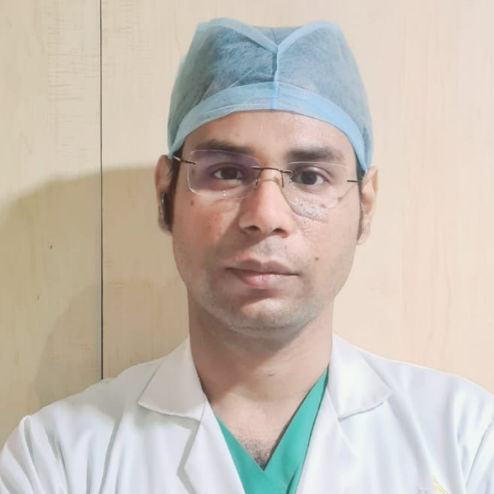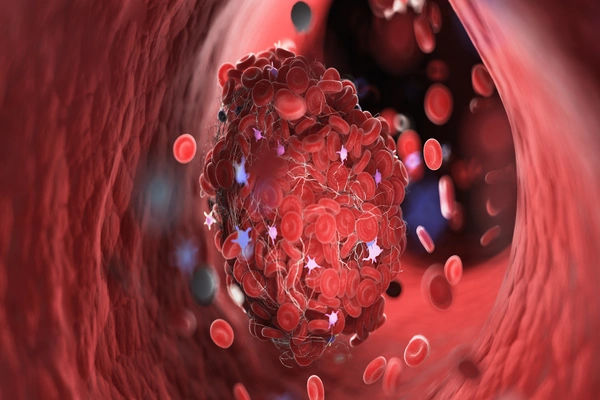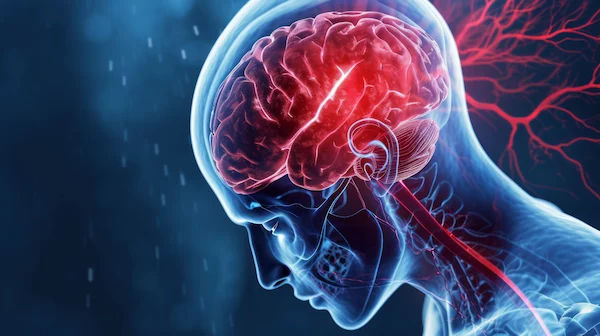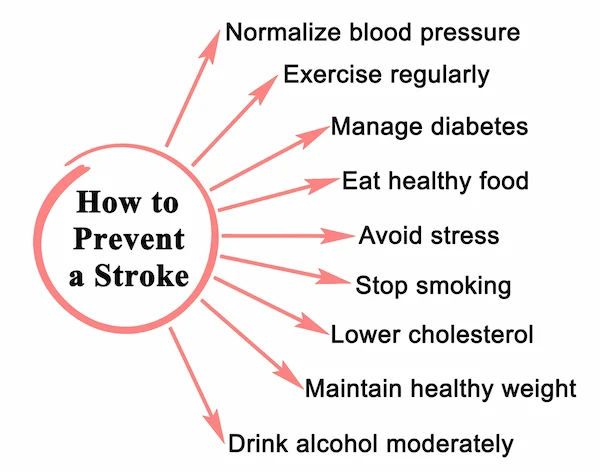Silent Stroke vs. Mini-Stroke; Your Essential Guide to the Differences
Discover the key differences between silent strokes and mini-strokes (TIA). Learn their causes, symptoms, risks, and how to protect your brain health.

Written by Dr. J T Hema Pratima
Reviewed by Dr. Dhankecha Mayank Dineshbhai MBBS
Last updated on 6th Oct, 2025
.webp?tr=q-80,f-webp,w-350,dpr-2,c-at_max 700w)
Introduction
Imagine a storm causing damage within your body, but you feel no rain and hear no thunder. This is the paradoxical nature of silent and mini-strokes—brain events that often occur without the dramatic symptoms we associate with a major stroke. Many people use the terms "silent stroke" and "mini-stroke" interchangeably, but they describe two distinct medical conditions with different implications for your health. Understanding this difference is not just a matter of semantics; it's crucial for effective prevention, timely diagnosis, and protecting your long-term cognitive function. A transient ischaemic attack (TIA), often called a mini-stroke, is a temporary blockage with clear, albeit short-lived, symptoms. A silent stroke, however, causes permanent damage to brain tissue but happens without any noticeable symptoms, often being discovered incidentally years later. This guide will demystify these conditions, equipping you with the knowledge to recognise the warning signs, understand your risks, and take proactive steps to safeguard your brain health. We'll break down the causes, symptoms, and critical differences to empower you with essential healthcare
What is a Stroke? The Common Underlying Problem
At its core, any stroke—whether major, mini, or silent—is a problem with the blood supply to the brain. Brain cells are incredibly sensitive and require a constant flow of oxygen and nutrients delivered by blood. When this blood flow is interrupted, even for a short period, brain cells begin to die. The type of stroke is defined by how this blood flow is disrupted and for how long.
The Two Main Types of Major Strokes
Ischaemic Stroke: The Blocked Artery
This is the most common type, accounting for about 87% of all strokes. An ischaemic stroke occurs when a blood clot blocks or plugs an artery leading to the brain. The clot can form directly in the brain's blood vessels (thrombotic stroke) or travel from elsewhere in the body, such as the heart, and lodge in a narrower brain artery (embolic stroke).
Haemorrhagic Stroke: The Burst Blood Vessel
A haemorrhagic stroke is less common but often more deadly. It happens when a weakened blood vessel in the brain ruptures and bleeds into the surrounding tissue. The leaking blood accumulates and compresses the brain cells, causing damage. High blood pressure and aneurysms (weak spots in blood vessel walls) are common causes.
Demystifying the "Mini-Stroke" (Transient Ischaemic Attack - TIA)
A Transient Ischaemic Attack (TIA), commonly known as a mini-stroke, is best understood as a temporary blockage. It's a warning stroke that produces stroke-like symptoms but doesn't cause permanent damage. The key word is "transient"—the blockage is temporary and resolves on its own, typically within a few minutes to 24 hours.
Key Characteristics of a TIA
Temporary Symptoms: The symptoms are identical to those of a major stroke but are short-lived. They may include sudden numbness or weakness in the face, arm, or leg (especially on one side of the body), confusion, trouble speaking or understanding speech, and vision problems.
No Permanent Infarction: Because the blood flow is restored quickly, a TIA does not lead to a permanent area of dead brain tissue (an infarction). This is the fundamental difference from a major or silent stroke.
Why a TIA is a Major Medical Warning Sign
Never ignore a TIA. It is a critical red flag indicating a high risk of a future major stroke. Studies show that about 1 in 3 people who have a TIA will later have a more severe stroke, with the highest risk being in the first 48 hours. A TIA is your body's way of sounding an alarm that there's an underlying issue, such as a narrowed artery or a clot-producing heart condition like atrial fibrillation.
Health topic carousel:
Doctor's speciality: Nuerology
Text: Consult a Neurologist for the best advice
Understanding the "Silent Stroke" (Silent Cerebral Infarction)
A silent stroke is more insidious. Medically, it's known as a Silent Cerebral Infarction (SCI). Unlike a TIA, a silent stroke does cause permanent damage to brain tissue. It is a "stroke" in the true sense because a small blood vessel in the brain becomes blocked, leading to the death of a small cluster of brain cells.
How a Silent Stroke Goes Unnoticed
The damage is "silent" because it occurs in a part of the brain that doesn't control any obvious functions like movement or speech. For example, if the tiny stroke happens in a region involved in memory or reasoning, the symptoms might be so subtle—like a slight lapse in memory or a minor change in mood—that they are easily attributed to ageing or a busy lifestyle. There is no dramatic event, which is why many people are unaware they've had one.
The Cumulative Damage of Silent Strokes
The danger of silent strokes lies in their cumulative effect. While a single, small silent stroke may have no noticeable impact, having multiple over time can lead to a significant decline in cognitive abilities. This accumulation is a major contributor to vascular dementia and can manifest as problems with memory, concentration, and walking. Research using MRI scans has found that silent strokes are surprisingly common, especially in older adults.
Side-by-Side: Key Differences Between a TIA and a Silent Stroke
Feature
Mini-Stroke (TIA)
Silent Stroke (SCI)
Blood Flow
Temporary blockage that resolves
Permanent blockage in a small vessel
Brain Damage
No permanent tissue damage
Yes, permanent tissue damage (infarction)
Symptoms
Noticeable, but temporary (e.g., slurred speech, weakness)
None or very subtle (often go unnoticed)
Primary Risk
High risk of a future major stroke
Cumulative damage leading to vascular cognitive decline
Common Diagnosis
Based on symptom history; MRI may be clear
Incidental finding on an MRI or CT scan
Recognising the Signs: Symptoms You Must Not Ignore
Vigilance is key. If you or someone you know experiences any of the following symptoms, even if they disappear quickly, seek immediate medical attention.
The FAST Acronym for Major Stroke Symptoms
Face: Ask the person to smile. Does one side of the face droop?
Arms: Ask the person to raise both arms. Does one arm drift downward?
Speech: Ask the person to repeat a simple phrase. Is their speech slurred or strange?
Time: If you observe any of these signs, call emergency services immediately. Time lost is brain lost.
Subtle Symptoms That Could Indicate a TIA or Silent Stroke
Be aware of more subtle changes, which could be silent stroke symptoms or signs of a mini-stroke recovery period:
Sudden, brief dizziness or loss of balance.
A momentary "blackout" or period of confusion.
A sudden severe headache with no known cause.
Brief changes in vision, like dimness or double vision.
A sudden lapse in memory or difficulty finding words.
If you experience any of these symptoms, even for a few minutes, it is crucial to consult a doctor. If symptoms persist beyond two weeks, or if you're concerned about recurring subtle issues, consult a doctor online with Apollo24|7 for further evaluation.
What Causes These Brain Events? Shared Risk Factors
The causes of a silent stroke and a TIA are largely the same as those for a major stroke. The primary culprit is atherosclerosis, a condition where plaque builds up in the arteries, narrowing them and making them prone to clots. Key risk factors include:
High Blood Pressure (Hypertension): The single most important controllable risk factor.
Atrial Fibrillation (AFib): An irregular heartbeat that can cause blood clots to form in the heart.
High Cholesterol: Contributes to plaque build-up.
Diabetes: Damages blood vessels over time.
Smoking: Significantly increases risk.
Age: Risk increases as you get older.
How Are Silent and Mini-Strokes Diagnosed?
Diagnosis depends on the presentation. For a suspected TIA, a doctor will take a detailed history of the symptoms and perform a neurological exam. For both TIA and suspected silent strokes, imaging is critical.
MRI (Magnetic Resonance Imaging): This is the gold standard. An MRI, particularly a Diffusion-Weighted Imaging (DWI) sequence, can detect even very small areas of recent brain damage from a silent stroke. It can also confirm if a TIA has occurred by showing tiny, acute infarcts.
CT Scan: Can rule out bleeding or a large stroke but is less sensitive than an MRI for detecting small silent strokes.
Other Tests: To find the cause, doctors may order an echocardiogram (heart ultrasound), carotid ultrasound (to check neck arteries), and blood tests. Apollo24|7 offers convenient home collection for tests like HbA1c (for diabetes monitoring) and lipid profiles (for cholesterol), which are essential for assessing stroke risk.
The Role of MRI in Detecting Silent Strokes
Many people discover they've had a silent stroke only when they get an MRI for an unrelated reason, such as investigating headaches or dizziness. The scan reveals small white spots or lesions, which are the scars left by the dead brain tissue.
Treatment and Prevention: Taking Control of Your Brain Health
The goal of treatment for mini-stroke and silent stroke is to prevent a future, more devastating event. The strategies are lifelong and focus on managing underlying conditions.
Medications to Manage Risk
Antiplatelets: Drugs like aspirin or clopidogrel help prevent blood clots from forming.
Anticoagulants: For those with AFib, drugs like warfarin or dabigatran are used.
Blood Pressure Medications: ACE inhibitors, beta-blockers, etc.
Statins: To lower cholesterol and stabilise plaque.
Lifestyle Modifications for Stroke Prevention
This is the cornerstone of stroke prevention.
Diet: Adopt a heart-healthy diet (e.g., DASH or Mediterranean diet) low in salt, saturated fat, and processed foods.
Exercise: Aim for at least 150 minutes of moderate-intensity exercise per week.
Weight Management: Maintain a healthy weight.
Smoking Cessation: Quit smoking immediately.
Limit Alcohol: Drink in moderation.
Conclusion: Knowledge is Your Best Defence
Understanding the critical difference between a transient mini-stroke (TIA) and a permanent silent stroke empowers you to be an active participant in your health. A TIA is a loud, clear warning siren for a future major stroke, while a silent stroke is a stealthy threat that can erode cognitive function over time. Both, however, share the same root causes and demand the same serious approach to prevention. By knowing the symptoms—both dramatic and subtle—managing your risk factors diligently, and seeking prompt medical attention for any warning signs, you can significantly reduce your risk and protect your brain's health for years to come. Your vigilance today can prevent a life-altering event tomorrow.
Frequently Asked Questions (FAQs)
Can you have a mini-stroke and not know it?
Typically, no. By definition, a mini-stroke (TIA) has noticeable symptoms like weakness or speech problems, even if they are brief. What people might be thinking of is a silent stroke, which, by its nature, occurs without obvious symptoms.
What are the long-term effects of a silent stroke?
The effects are cumulative. A single silent stroke may have no apparent effect, but multiple silent strokes can lead to vascular cognitive decline, including problems with memory, reasoning, and balance, and are a leading cause of vascular dementia.
How common are silent strokes?
They are very common, especially with age. Research suggests that by the age of 70, approximately 1 in 10 people have evidence of a silent stroke on an MRI scan. The prevalence is higher in people with risk factors like hypertension and diabetes.
What is the difference between a TIA and a mini-stroke?
There is no difference. "Mini-stroke" is the common term for a Transient Ischaemic Attack (TIA). Both refer to the same temporary blockage event.
Can a young person have a silent stroke?
While the risk increases with age, young people can have silent strokes, particularly if they have uncontrolled risk factors like very high blood pressure, certain blood-clotting disorders, or structural heart problems.
Health topic carousel:
Doctor's speciality: Nuerology
Text: Consult a Neurologist for the best advice
Consult Top Specialists for Personalised Tips

Dr. Aditendraditya Singh Bhati
Neurosurgeon
18 Years • MBBS(2004), DNB Neurosurgery(2014); MNAMS; Fellow Neuroendoscopy
Delhi
Apollo Hospitals Indraprastha, Delhi
(100+ Patients)

Dr. Ganeshgouda Majigoudra
Neurologist
10 Years • MBBS, MD ( GENERAL MEDICINE) DM (NEUROLOGY)
Bengaluru
Apollo Clinic, JP nagar, Bengaluru

Dr. E Prabhakar Sastry
General Physician/ Internal Medicine Specialist
40 Years • MD(Internal Medicine)
Manikonda Jagir
Apollo Clinic, Manikonda, Manikonda Jagir
(150+ Patients)

Dr Rajashekar Mummadi
Neurologist
3 Years • MBBS, DNB General Medicine, DRNB Neurology
Hyderabad
Dr Ram's Neuro Clinic, Hyderabad

Dr Debnath Dwaipayan
Neurosurgeon
9 Years • MBBS, MS(Gen. Surgery), DrNB (Neurosurgery)
Delhi
Apollo Hospitals Indraprastha, Delhi
Consult Top Specialists

Dr. Aditendraditya Singh Bhati
Neurosurgeon
18 Years • MBBS(2004), DNB Neurosurgery(2014); MNAMS; Fellow Neuroendoscopy
Delhi
Apollo Hospitals Indraprastha, Delhi
(100+ Patients)

Dr. Ganeshgouda Majigoudra
Neurologist
10 Years • MBBS, MD ( GENERAL MEDICINE) DM (NEUROLOGY)
Bengaluru
Apollo Clinic, JP nagar, Bengaluru

Dr. E Prabhakar Sastry
General Physician/ Internal Medicine Specialist
40 Years • MD(Internal Medicine)
Manikonda Jagir
Apollo Clinic, Manikonda, Manikonda Jagir
(150+ Patients)

Dr Rajashekar Mummadi
Neurologist
3 Years • MBBS, DNB General Medicine, DRNB Neurology
Hyderabad
Dr Ram's Neuro Clinic, Hyderabad

Dr Debnath Dwaipayan
Neurosurgeon
9 Years • MBBS, MS(Gen. Surgery), DrNB (Neurosurgery)
Delhi
Apollo Hospitals Indraprastha, Delhi




